Everything you need to know about the Soviet Monument on Budapest’s Freedom Square — PHOTOS
Freedom Square (Szabadság tér) is located in the Hungarian capital, Budapest, close to the Parliament. This space is also special because it is home to the Soviet Monument, which is very divisive in society. Some people think that the monument is a symbol of Soviet oppression, while others recall the liberation of Budapest from the German army at the sight of the monument.

Photo: Fortepan
The construction of the New Building began in 1786, in the area of today’s freedom space. The building, designed by architect Isidore Canevale, used to be a prison for captive French officers. It was later transformed into an artillery barracks and a military academy. On the southern side of the square was the Promenade. It was later renamed Széchenyi Promenade, as he initiated the forestation and landscaping of the area. Participants in the War of Independence of 1848-49 were also imprisoned in the New Building.
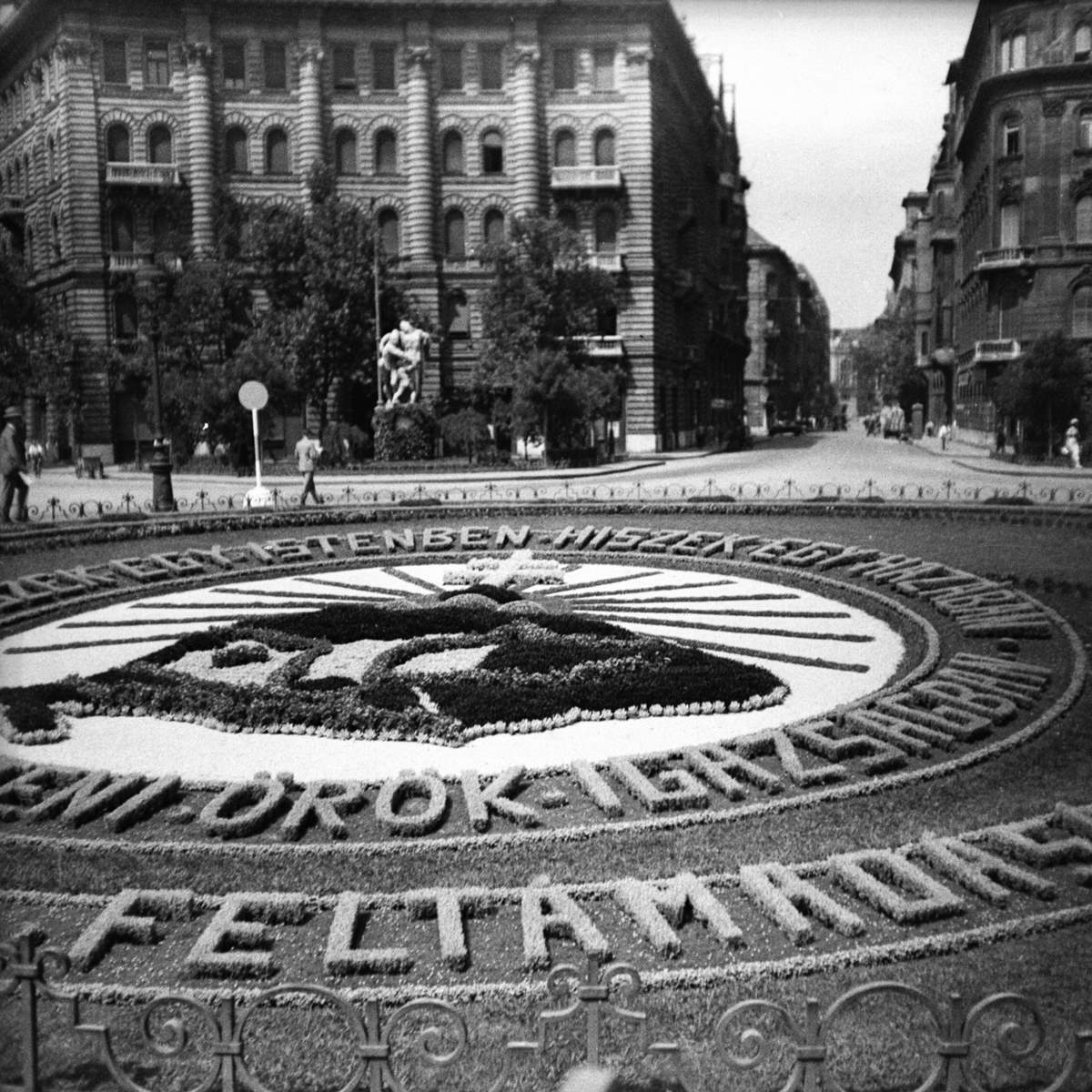
Photo: Fortepan/Dániel Antal
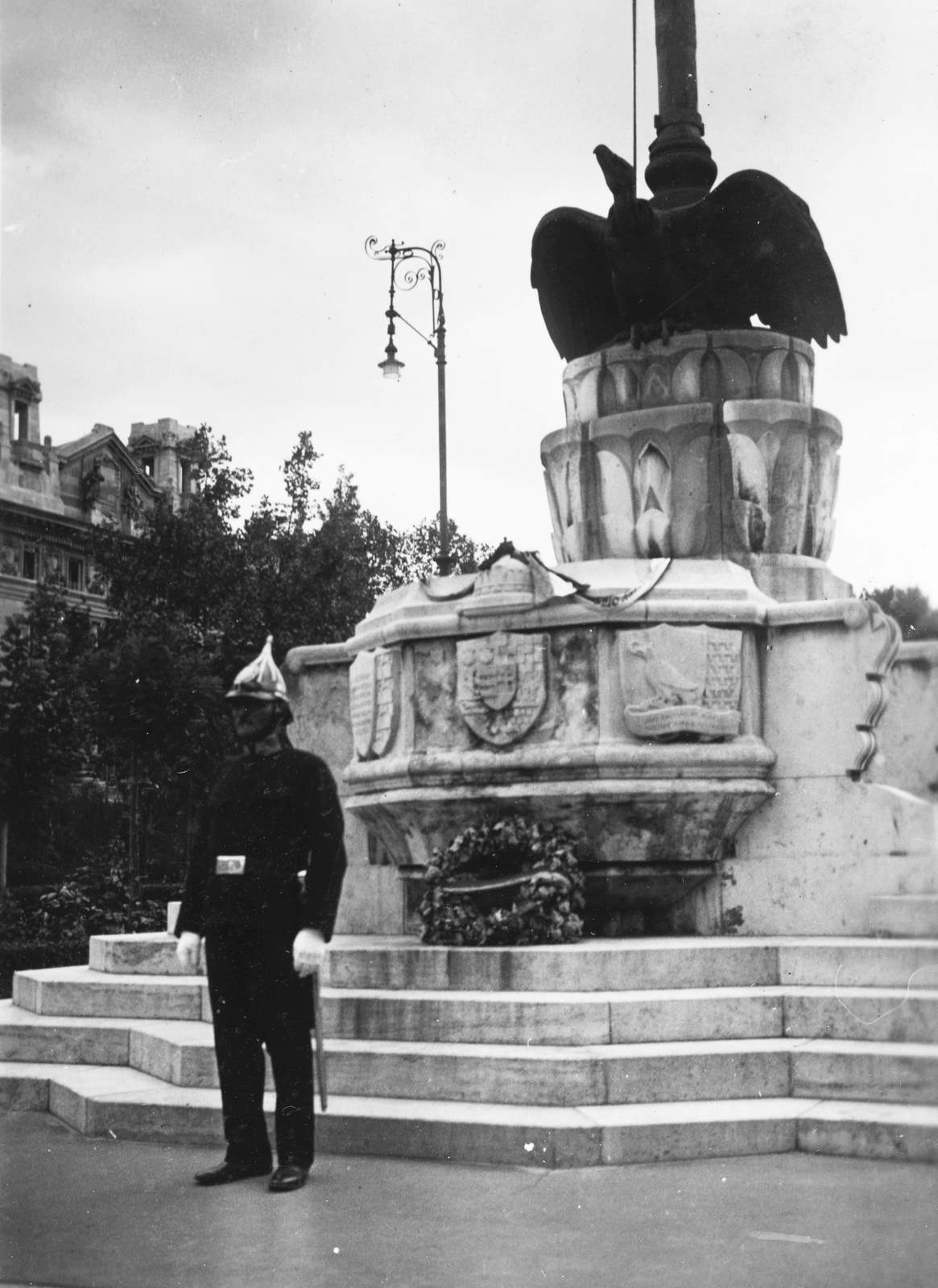
Photo: Fortepan/Márton Kurutz
Lajos Batthyány, the first Hungarian prime minister, was executed here.
They then wanted to use the building as a printing press and orphanage, but this did not happen. It was demolished in 1897, and a square was created according to the plans of Antal Palóczy. In 1900, it was named Freedom Square. Here you can find the Hungarian National Bank, the Stock Exchange Palace, and the Hungarian Trade Hall.
In 1928, the Relic Country Flag was handed over and placed in the square. Due to the Second World War, Budapest was in ruins. At the time, there were almost 40,000 buildings in the Hungarian capital, of which 1,500 were destroyed, 9,100 were severely damaged, and 18,600 were damaged, writes budapest-ostroma.hu.
Almost all of the German and Hungarian soldiers defending the capital died or were taken prisoner of war.
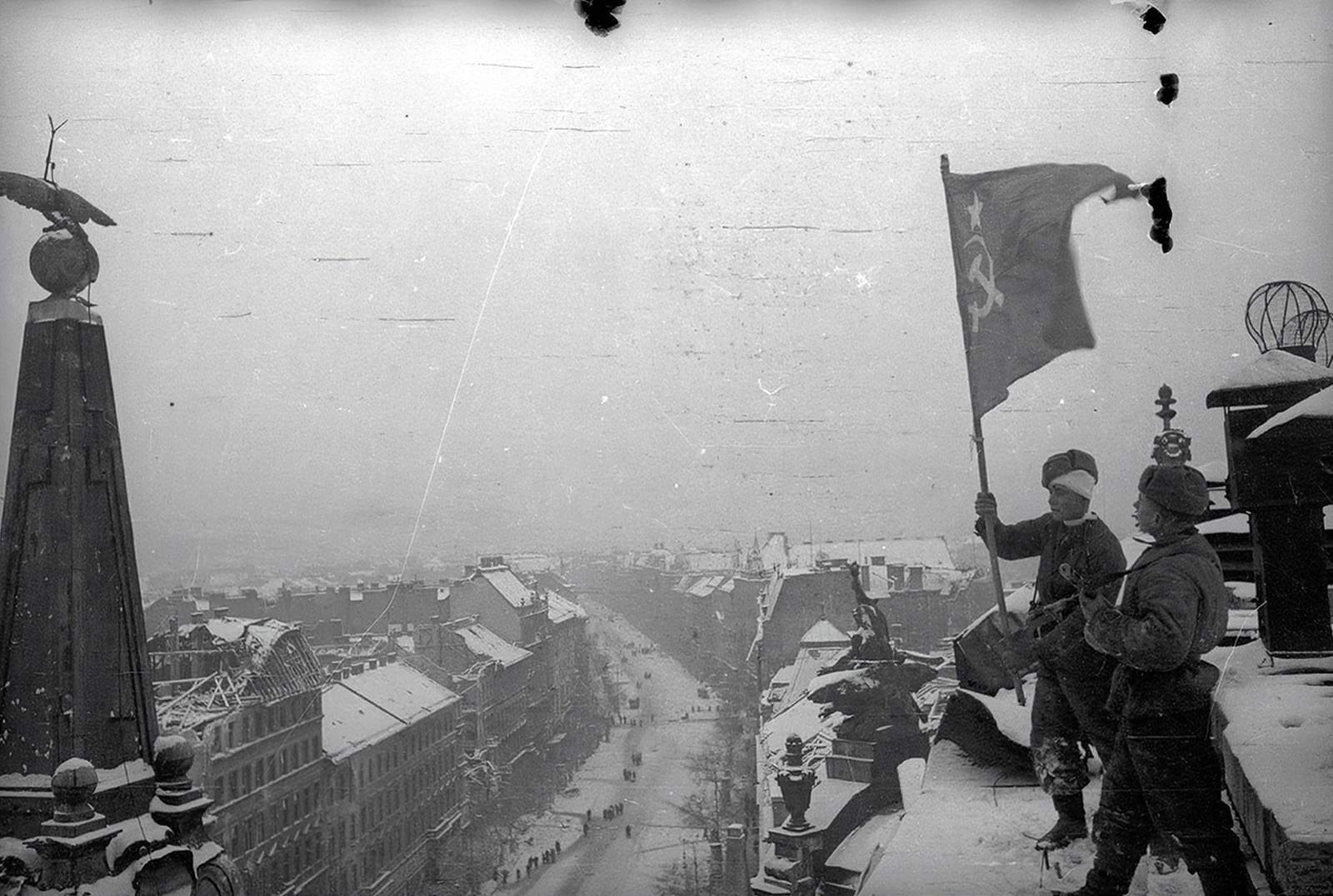
Photo: Fortepan/Vörös Hadsereg
The Soviets also lost 95,000 soldiers during the siege of Budapest. However, soldiers from the liberating Red Army committed a number of rapes. Plenty of civilians were taken to forced labour. After the Second World War, instead of rebuilding the capital, strengthening ideology came to the fore. As a result of this, many monuments have appeared, for example, the Soviet heroic monument in Szabadság Square, writes hellomagyar.hu.
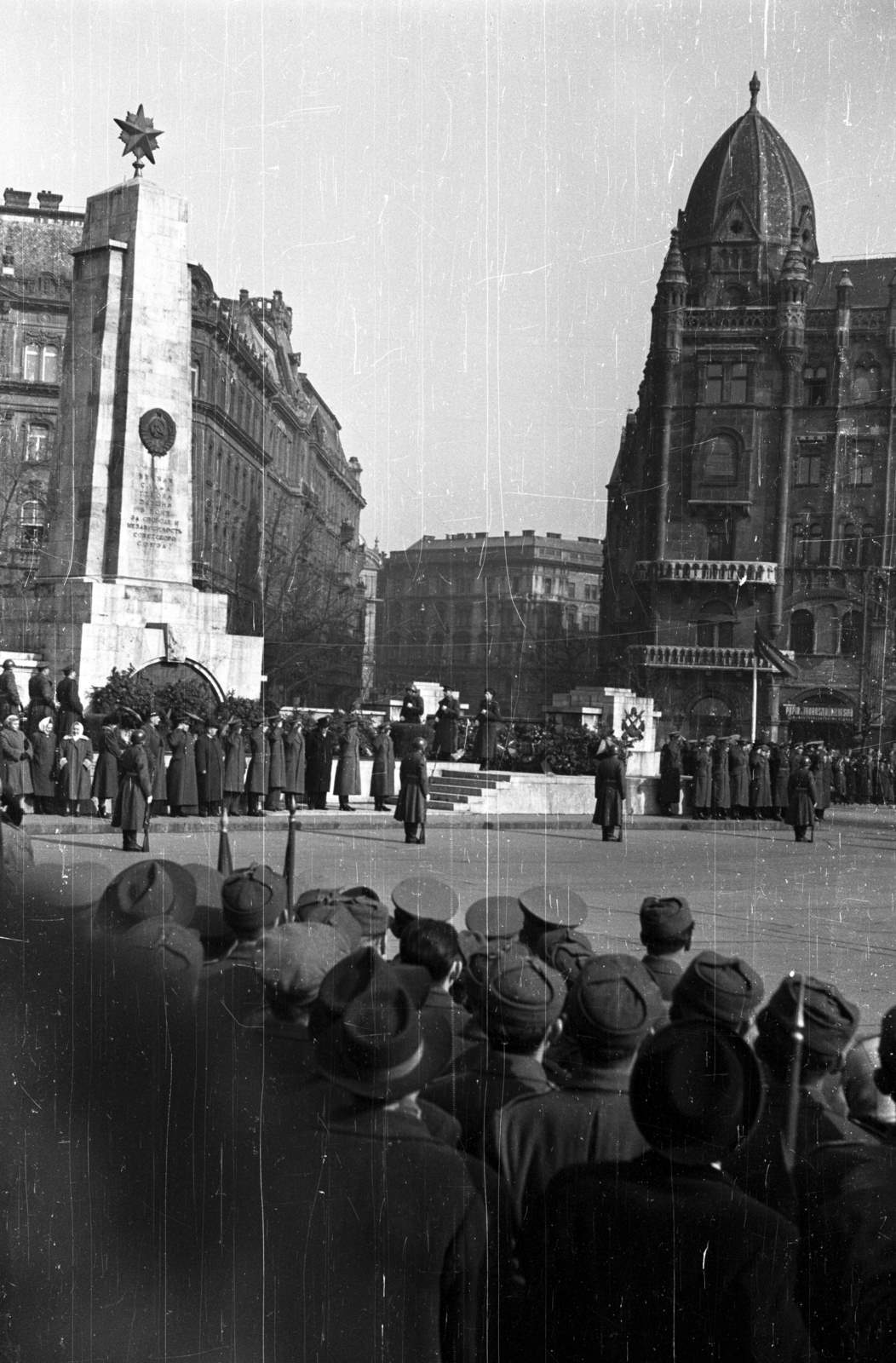
Photo: Fortepan
One of the most important elements of the monument is the five-pointed star at the top. “Glory to the liberating Soviet heroes” can be read in Hungarian and Russian Cyrillic letters. During the 1956 revolution, the monument was mutilated, but it was restored immediately after the revolution.
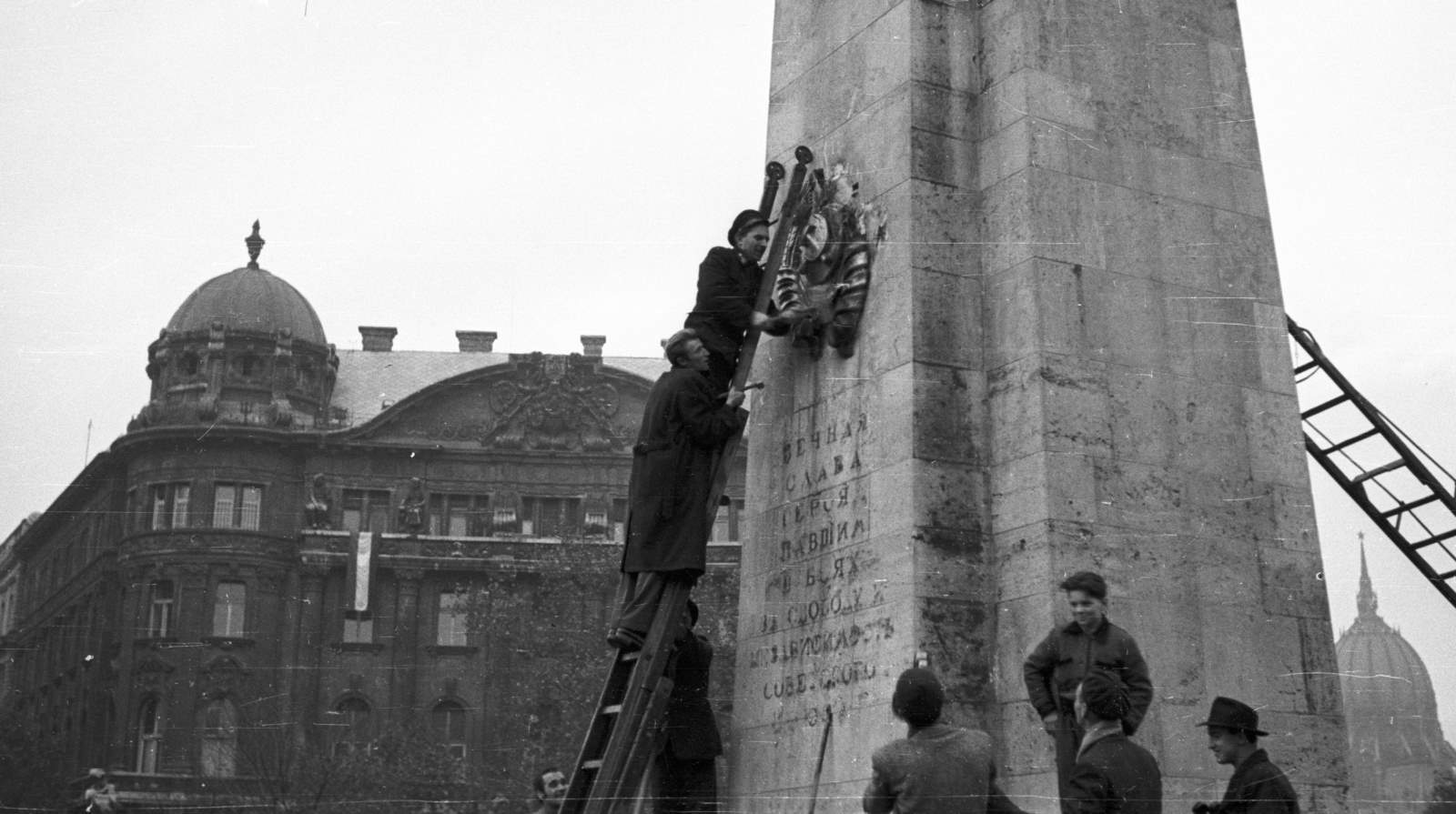
Photo: Fortepan
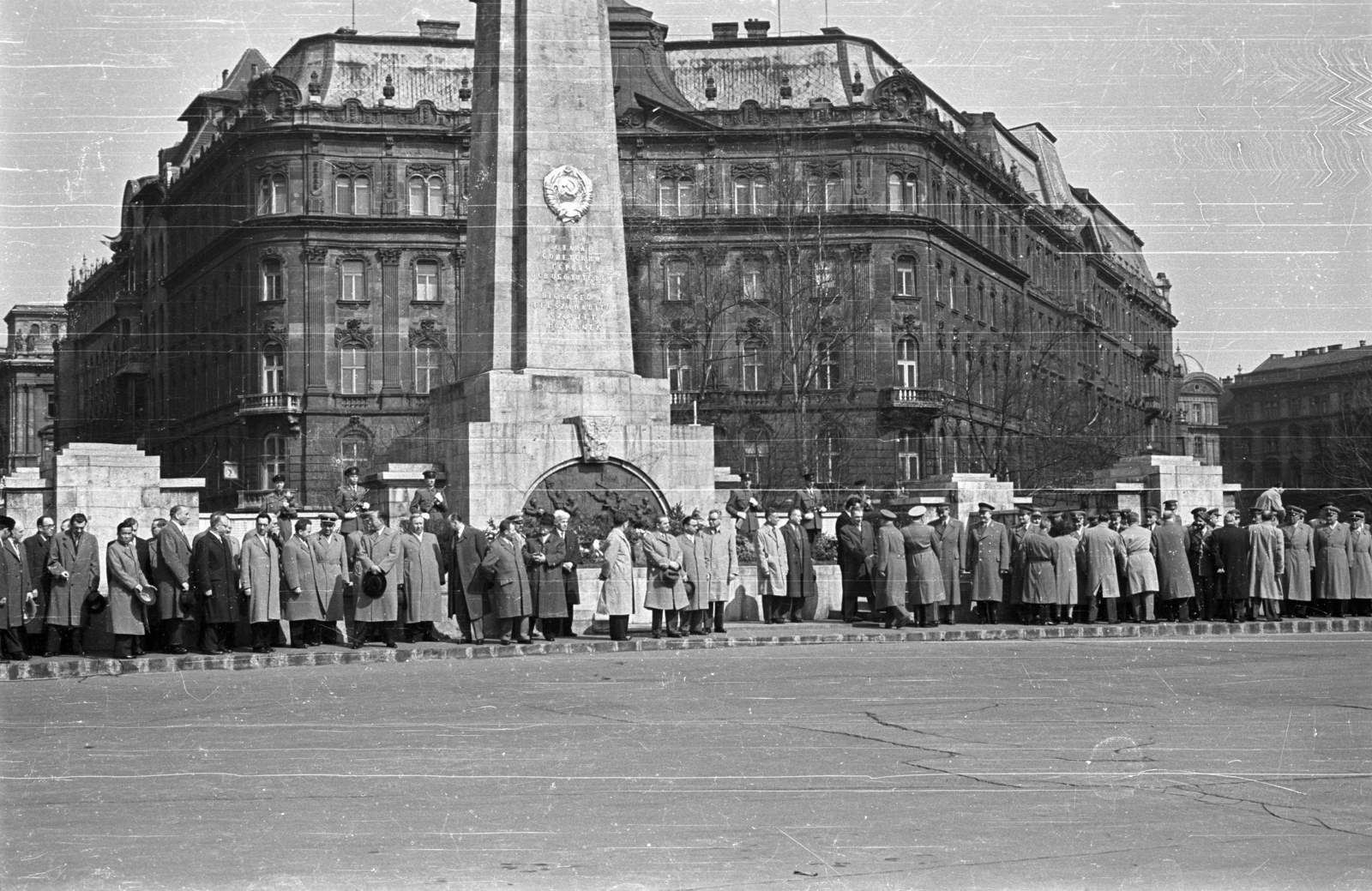
Photo: Fortepan/Mihály Szent-tamási
The monument has caused a divide in society since the regime change.
Several have suggested that it could be taken to a less central location at least. However, in order to maintain a good Hungarian-Russian relationship, this is not feasible. Some are reminded of the liberation from the German army and the end of World War II at the sight of the monument. Most, however, associate it with the 40-year Soviet occupation.
- Check out the most beautiful bridges of Budapest — PHOTOS
- Budapest’s most popular tourist sights are also Catholic monuments — VIDEOS
Source: budapest-ostroma.hu, hellomagyar.hu
please make a donation here
Hot news
British American Tobacco is expanding production in Hungary
Budapest mayoral candidate Vitézy promises thousands of units of affordable housing
Habits regarding tipping in Hungary may shock you
PM Orbán’s cilling warning: NATO is sliding into the war
VSquare: PM Orbán’s only son, Captain Gáspár, may be creating new Hungarian super secret service
Hungarian universities still exluded from the Erasmus+ programme



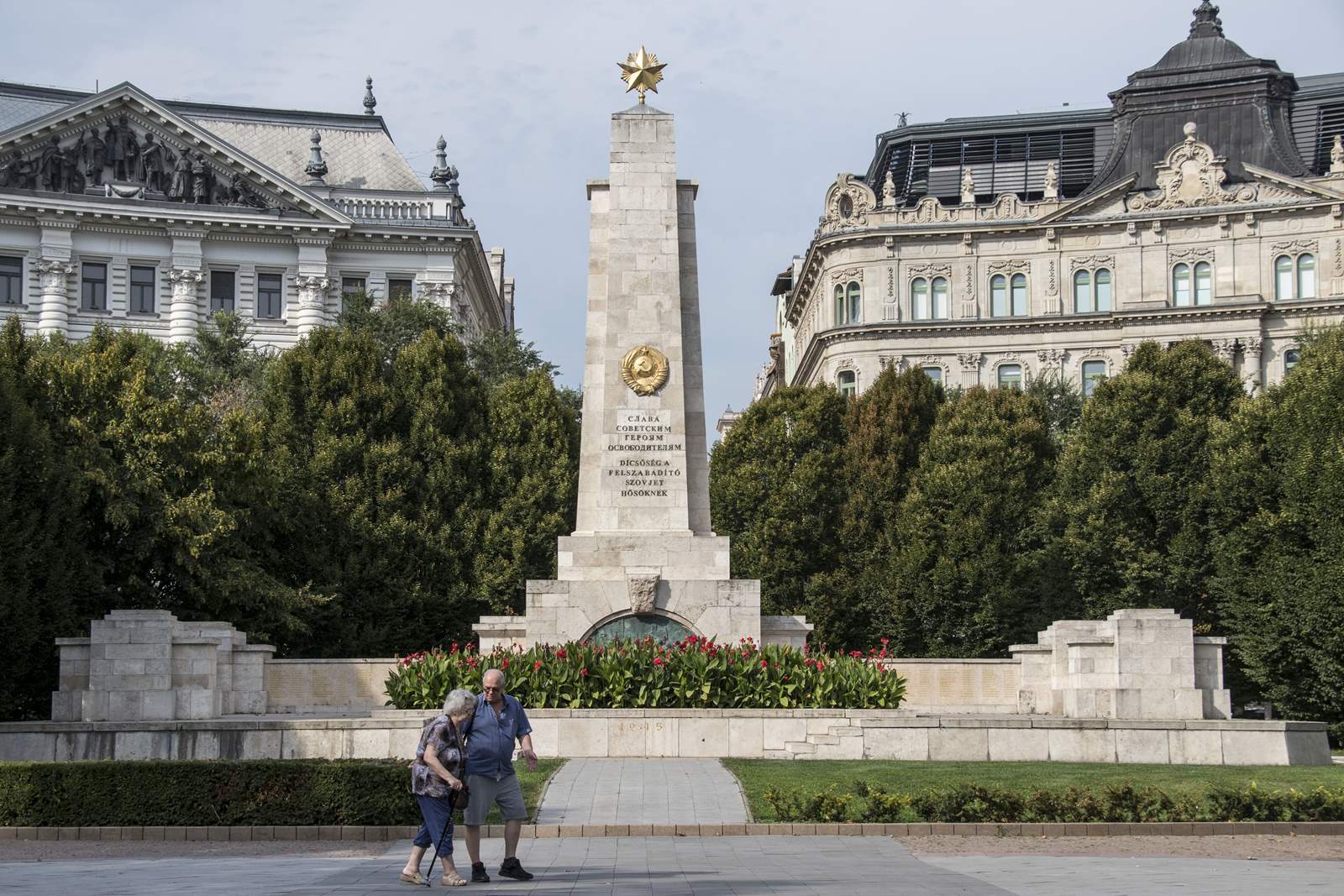

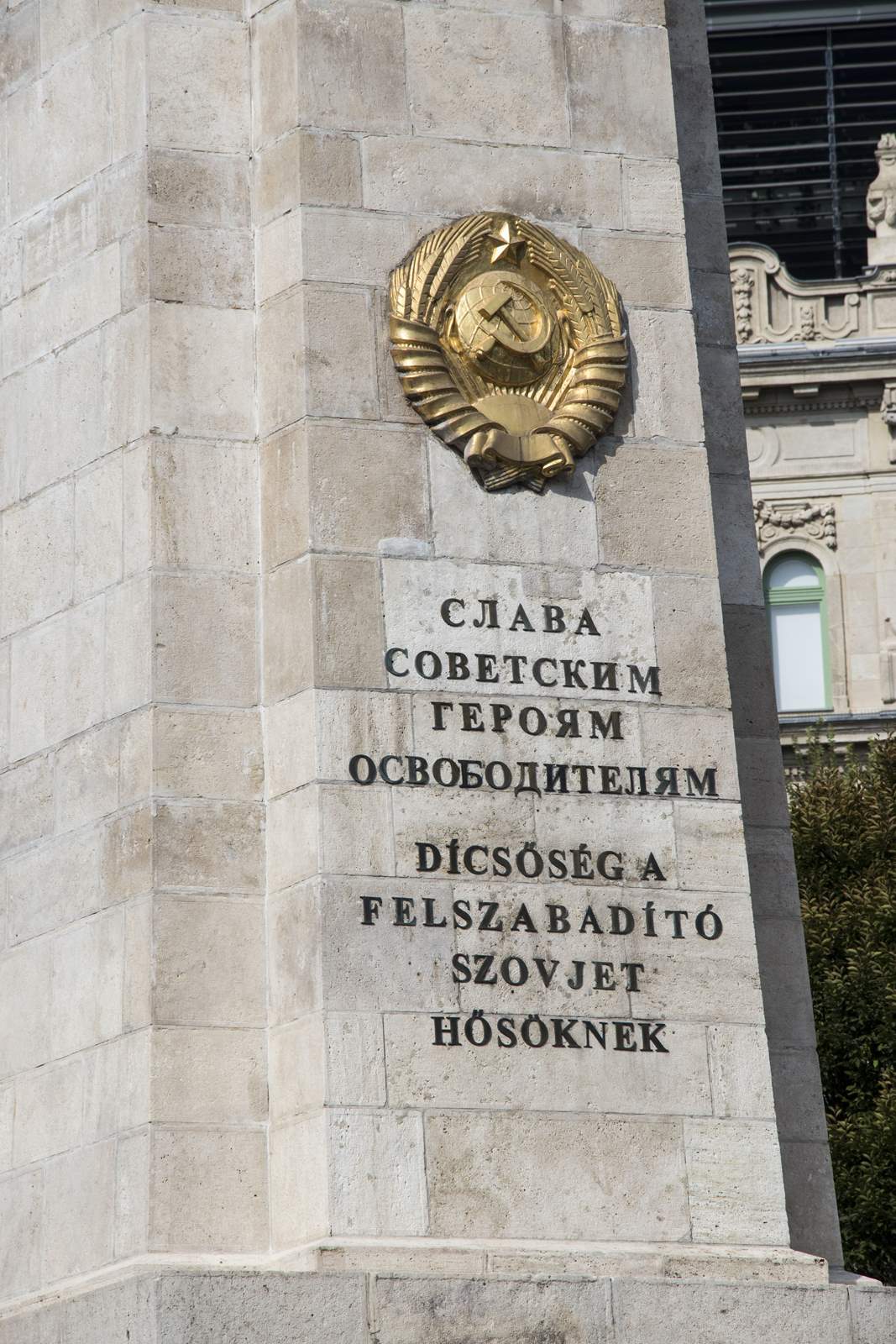
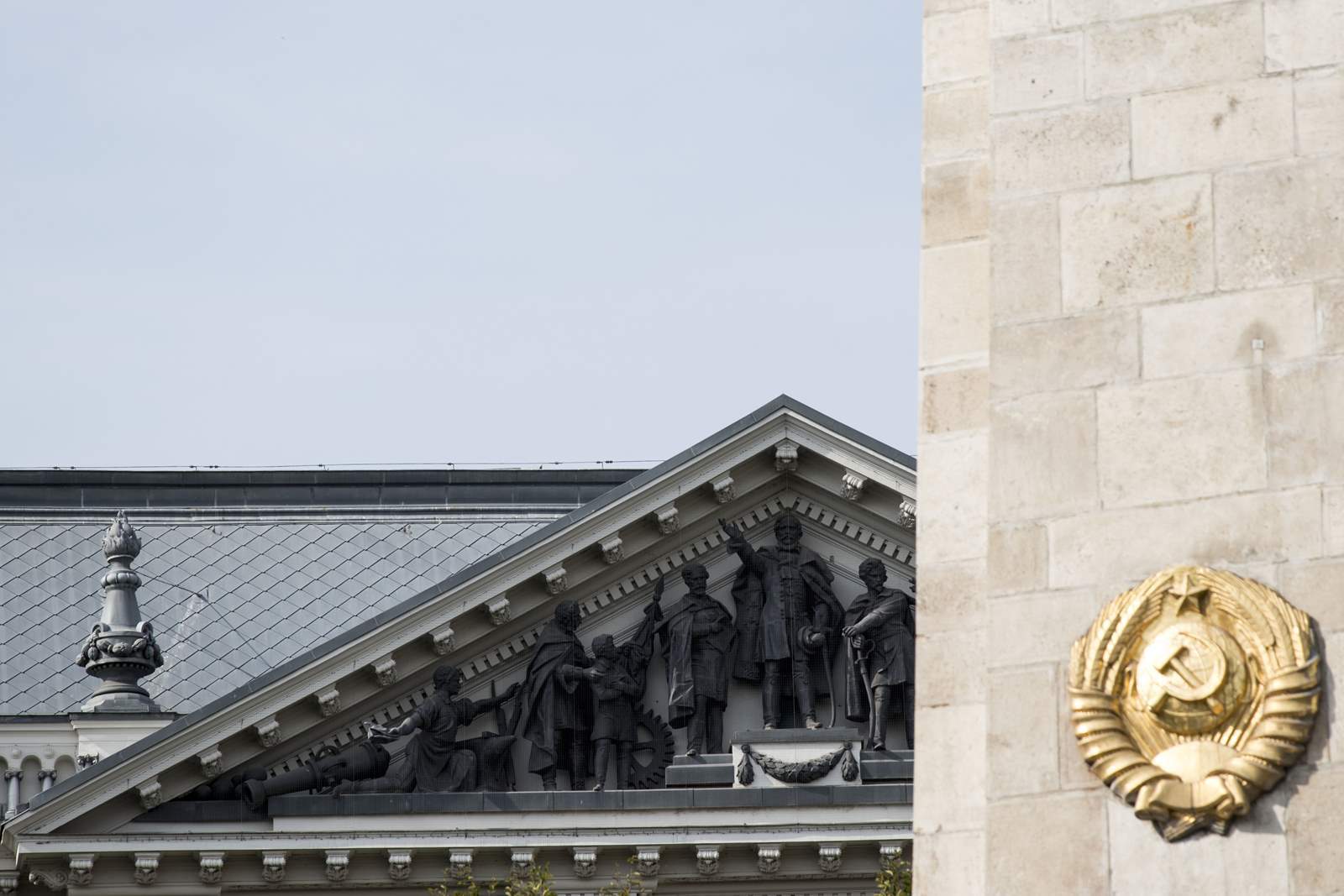
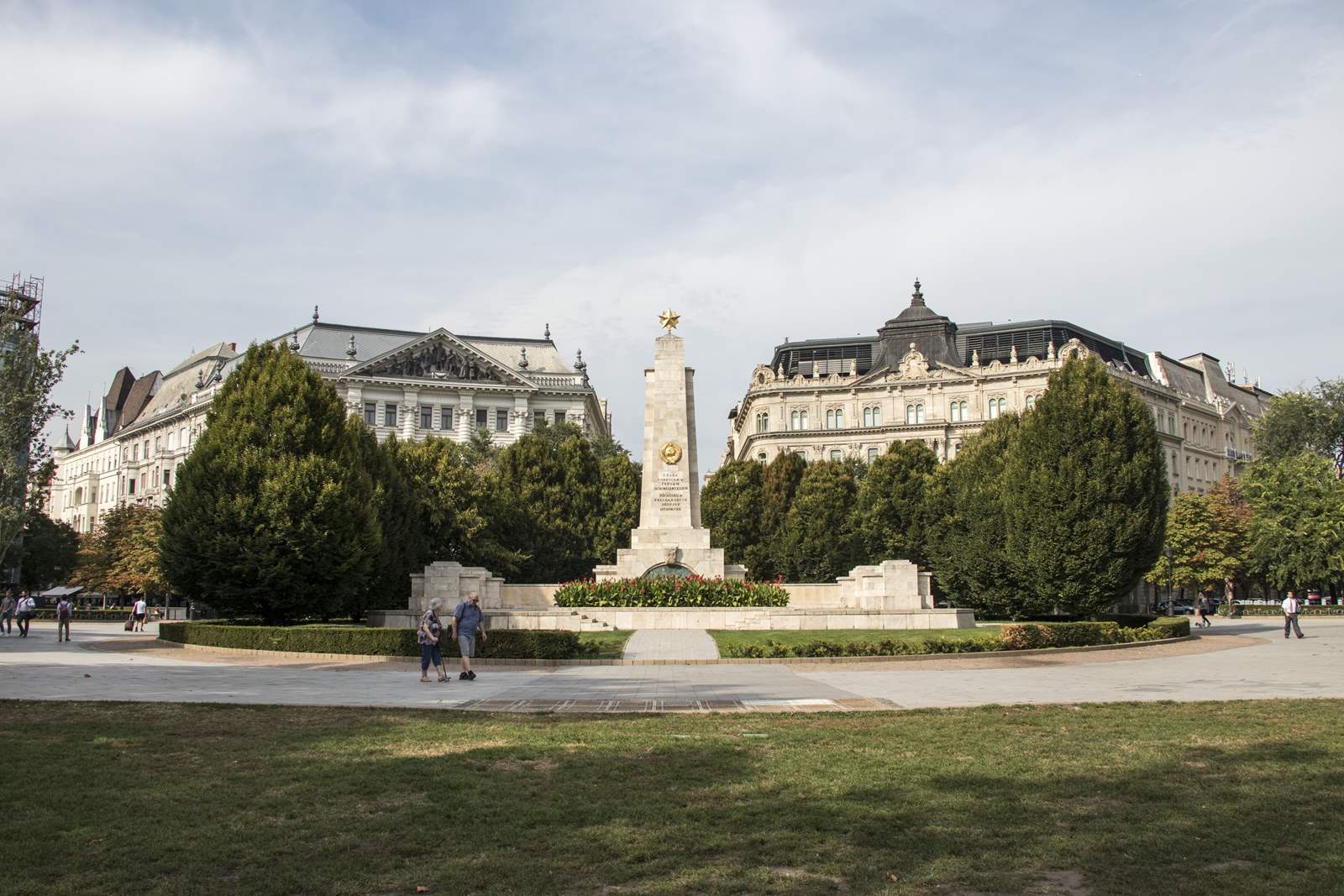
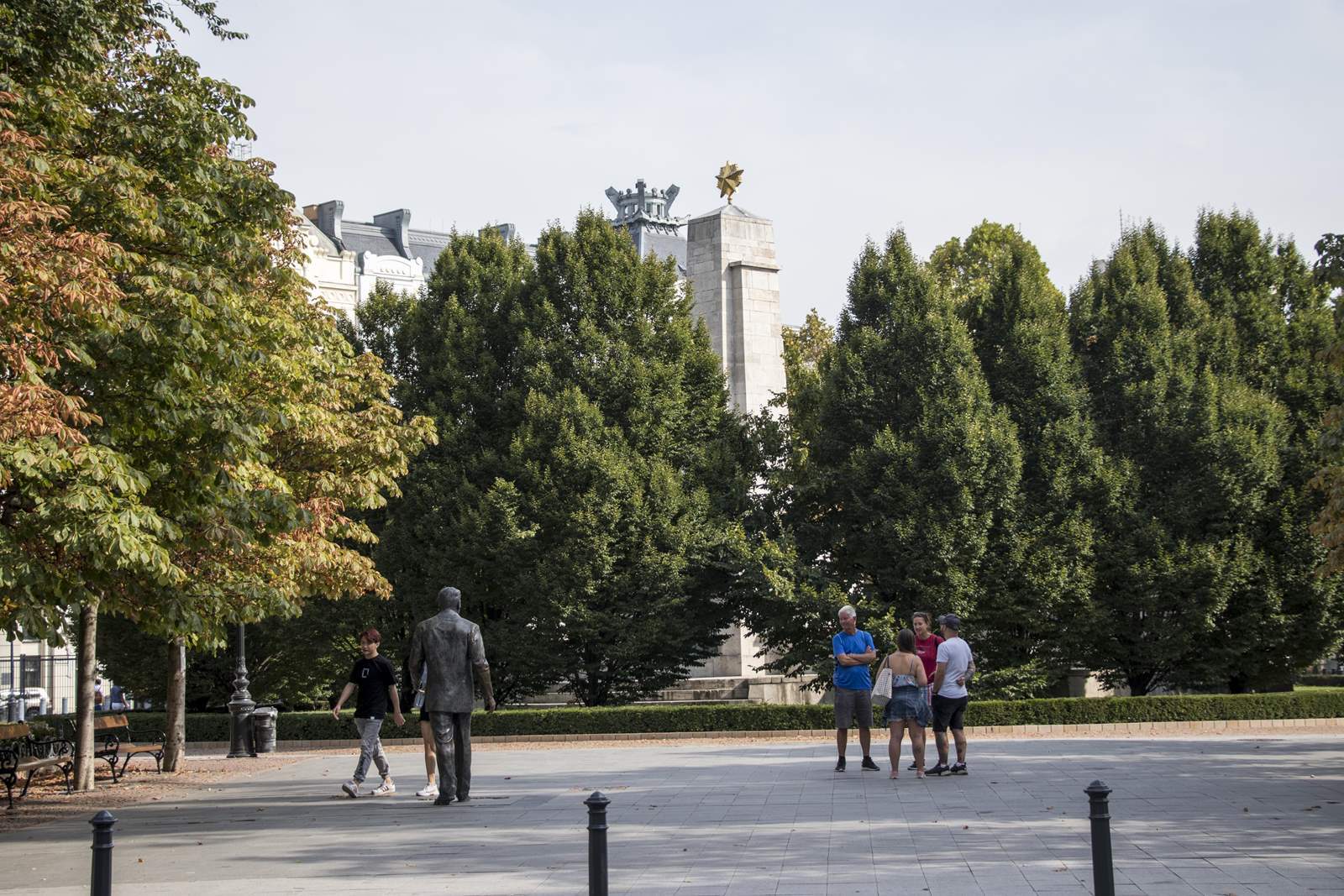

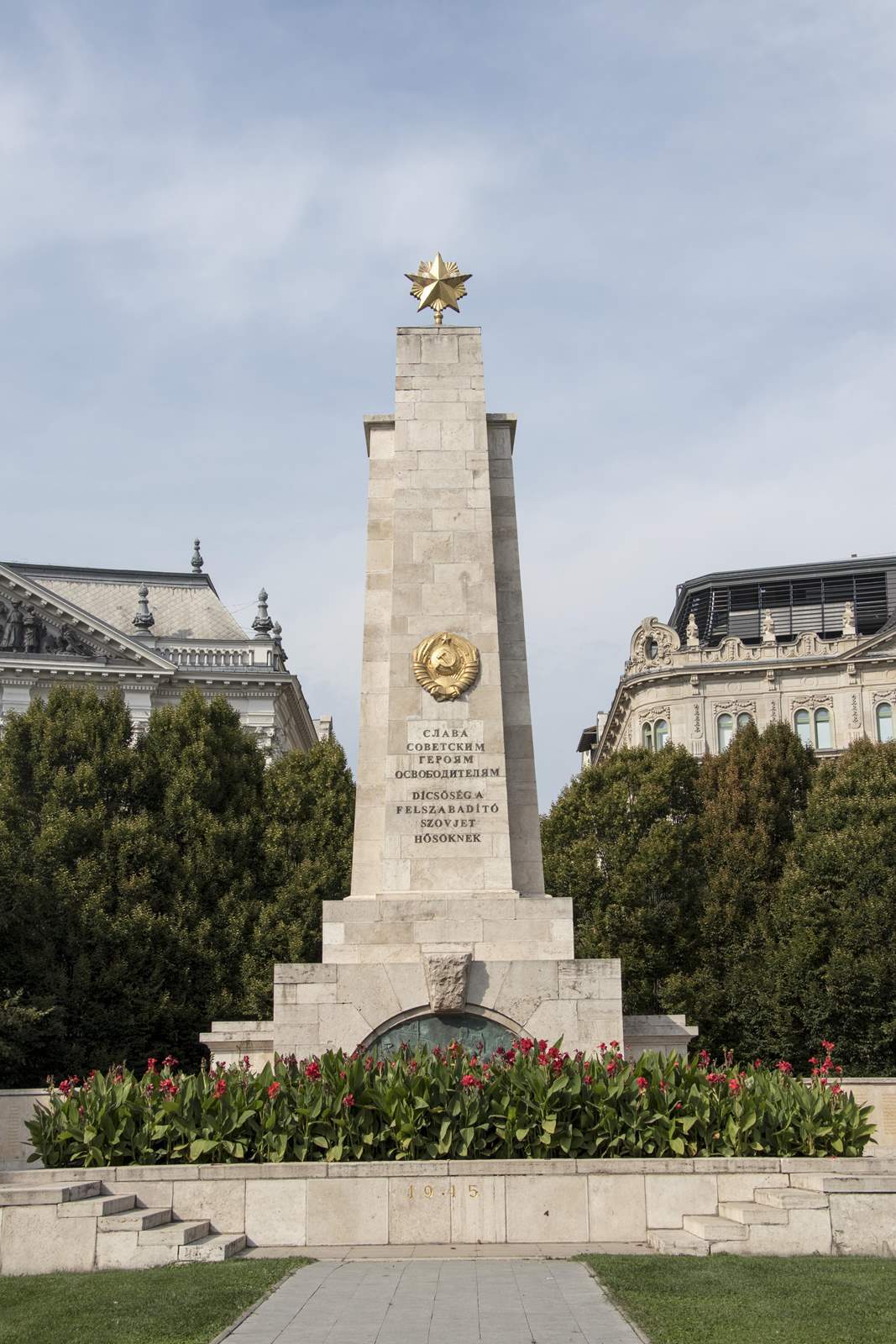

11 Comments
monument to murderers and rapists.
It is a disgusting abomination and reminder of hundreds of thousands of Hungarian girls and women raped and murdered by the Soviet savages and the hundreds of thousands of civilian boys and men deported to Siberia where most of them perished. Disgusting.
Destroy it. It glorifies the evil empire and socialism. Socialism is a disease and must excised, harshly.
History – what in 2021 – as a Monuement does it Represent ?
Whats its Message in 2021 ?
Getting into the “guts” – the facts of the German defeat – its hold and capture of Hungary in those “infamous” years – of the Second World War – then the Russian Invasion, and what – FACTUALLY – occurred under Communistic Rule – in the years of there “creed” and demonstration of there Political Agenda.
Move forward in reading looking at – FACTUAL lessons of History – from 1944 – to 1985 – what went on what – was going on and of the utter most IMPORTANCE – answering the Penetrating question – what FUTURE – did Hungary have – if it remained a “puppet on a string” run and controlled from Moscow ???
History – near on 45 years – that we Hungary – crippled, stiffened, retarded – stripped of our Sovereignty – our Proud and Glorious History – culture way of life – we had – no alturnative – but to live under Russian Communistic Rule.
The past decade – the present Government/Fidesz led Party by Prime Minister – Victor Orban – for it’s good and it’s wrongs – has continued “fragmentally” to move Hungary on and forward – releasing it from this remaining – still within its society – that remain “rooted” – in – “embracing” – holding onto – a belief – driven by a communistic style of Political Mentality and that Hungary – it’s Future should be by there – DOGMA.
History – the on-going changes of the face of Europe and the World – 2021 and what is still to unfold happen throughout this novel coronavirus invasion – Globally.
Hungary – our FUTURE – what do we WANT ?
What – Rule of Government – Style of Government – Ideas and Philosophy – do we WISH – as Citizens – to go into the FUTURE – moulding and shaping our lives – style of life-style and quality of life – opportunities, especially for the – YOUTH of Hungary ???
Freedom – what do we want ?
What of Liberty – what do we want ?
We are into the second year – commenced 2020 – of the greatest challenges changes to mankind – its control management and running of the World.
The decade 2020 to 2030 – don’t lose yourself in the Biden rhetoric – USA – waffle waffle – lets just WORRY – about us – Hungary – the next 10 years – stages through the 10 years – what do we want ???
Robert H. Jackson quote – “It is not the Function of Goverments – to keep the Citizens from falling into Error ; it is the function of the Citizens – from Falling into Error.”
History – read up on who – Robert H. Jackson was and his Legacy to Mankind – acted through Democracy.
Democracy – it is Constantly Reforming itself.
Hungary – what of our Future.
Beautiful monument. Very meaningful.
Socialism has nothing to do with this. The soviet union was a COMMUNIST country, know the difference. Americans should read a book and stop being brainwashed by your 6 news companies. How do I know you are American? Only an American would say such an ignorant thing.
Destroy it!!
One can’t separate liberty from ideology of liberators.
Soviets were Communists, Fact.
If Hungarians could choose what Army should liberate Hungary, they would probably have opted for the British Army….regretfully the Soviets marched in first.
It’s your country & your Capital, thus it’s your exclusive right to decide the future of that Monument.
More Power to You.
The so-called Soviets were from UKRAINE, in case you want to pick up a book to read, it won’t bite. That’s why Russia had a lot of problems after WW2 because Western Ukraine was dominated by fascism still alive in conscience of the Banderovites, the followers of Stepan Bandera the back then Ukrainian Nazi war criminal, and in today’s Western Ukraine a “war hero” with his name Bandera on many streets, schools and 2 national holidays bearing his name. Yes, the monument is a symbol of LIBERATION from the same Nazis that over-run Western Ukraine, over which a great famine was brought by Stalin, not on entire Russia, only on Western Ukraine. The wounds are deep and old, and Russia will never forget the Ukrainian Nazis. And for this liberation of Hungary the real Russians must be praised (not the Nazi sympathizers Ukrainians), because Russia’s commitment WON the WW2 not the “Allies”, by sacrificing over 25 million Russian people. So yes, SLAVA SOVIET or in modern words SLAVA RUSSIA !
It is a shame that hated Communist Russian/Soviet statue still standing under Orbán’s government, and yet they pretend
celebrate the 1956 uprising against the Russians by the Hungarian Freedom F
It looks as if Fidesz past communist members after all those years, with that hated Soviet statue is still standing, got the upper hand and that is nothing less than a total disgrace!
It is a shame that the hated Soviet/Russian statue, after all those years of Fidesz Government, is still standing.
One can assume it is due to Fidesz past Communist members in power in the government keeping the Russians happy despite pretending to honour the 1956 uprising against the Soviets.
It is about time for the Government to ask the people of Hungary to vote in favour of keeping, or removing, that Soviet era statue of colonization of Hungary.